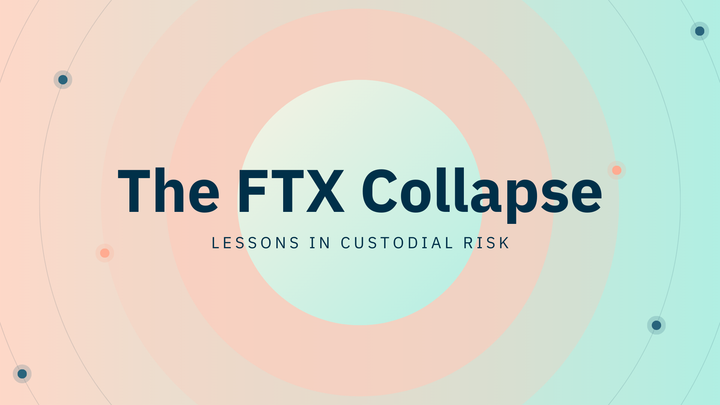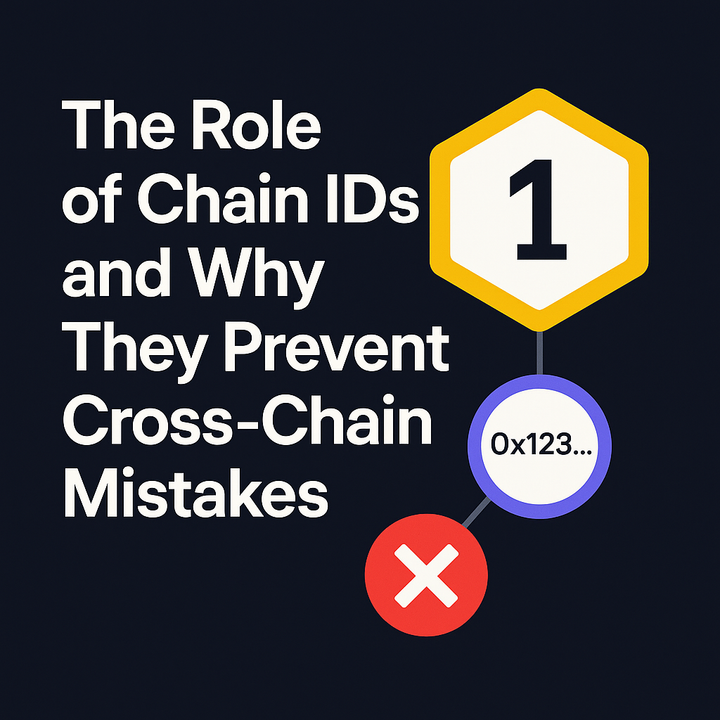From TCP/IP to Mitosis: Paving the Way for a Unified Internet of Value

1. Introduction: The TCP/IP Revolution and the Birth of the Modern Internet
Before diving into the world of Web3 and cross-chain liquidity, let's take a brief historical detour. Let's recall the technology without which our current digital world is unimaginable – the TCP/IP (Transmission Control Protocol/Internet Protocol) suite.
In the 1970s and 80s, numerous disparate computer networks existed, created by different organizations and operating under their own rules (ARPANET, NPL network, CYCLADES, etc.). They were like separate islands, unable to communicate effectively with each other. Transferring data between these networks was complex, unreliable, and often impossible. Sound familiar, doesn't it?
The advent of TCP/IP was a true revolution. This suite of protocols provided a universal language and set of rules for transmitting data between any networks, regardless of their underlying technology or physical infrastructure. TCP/IP abstracted away complexity, ensuring:
- Reliable Data Delivery: Guaranteeing that information packets would reach their destination in the correct order and without loss.
- Addressing and Routing: Allowing data to find its way from sender to receiver through the intricate web of interconnected networks.
- Interoperability: Making interaction possible between previously incompatible systems.
It was TCP/IP that became the foundation upon which the modern Internet grew – a global network of networks that spawned email, the World Wide Web, streaming video, social media, and countless other applications that have changed our lives. TCP/IP became the "invisible engine" of information exchange.
Web3 and the "Disconnected Networks Problem" for Value
Now, let's fast forward to the present day and look at the world of Web3 and decentralized finance (DeFi). We see a strikingly similar picture, but this time it's not about transmitting information, but about transmitting value and liquidity:
- A Multitude of Blockchains: Ethereum, Solana, Polygon, Arbitrum, Cosmos networks, and hundreds of other L1s, L2s, and appchains – each with its own rules, assets, and ecosystems.
- Liquidity Fragmentation: Billions of dollars in liquidity are locked within these separate "islands," unable to move freely and efficiently.
- Complexity of Cross-Chain Interactions: Existing bridges are often difficult to use, expensive, and, most dangerously, vulnerable to attacks.
- Lack of a Unified Standard: There is no universal, widely accepted, and secure way for blockchains to "talk" to each other at the value level.
This fragmentation is holding back Web3's growth, limiting innovation, and creating a poor user experience. We have an "Internet of Information," but we still lack a truly unified and seamless "Internet of Value."
Mitosis: The Potential TCP/IP for Liquidity?
It is in this context that Mitosis emerges. If TCP/IP provided a universal protocol for data transmission, then Mitosis aims to become something like a "Liquidity Transfer Protocol" for Web3.
Mitosis, with its focus on:
- Secure and efficient asset movement between networks (using technologies like Hyperlane and EigenLayer AVS).
- Managing its own Ecosystem-Owned Liquidity (EOL) to ensure stability and availability.
- Simplifying the user experience for cross-chain operations.
...aspires to be that fundamental layer capable of uniting disparate "liquidity islands" into a single, interconnected space.
What Will You Learn From This Article?
In this article, we will explore this analogy further and examine:
- What specific parallels can be drawn between the problems of the early internet and the current challenges of Web3 in the realm of liquidity.
- How Mitosis's key architectural decisions reflect the principles embedded in TCP/IP (e.g., creating a common protocol, abstracting complexity).
- Why the creation of such a "Liquidity Transfer Protocol" is critically important for the next stage of development for DeFi and all of Web3.
- What new possibilities and applications might arise if Mitosis (or similar solutions) truly become an integral, "invisible" infrastructure of the Internet of Value.
We will try to show that Mitosis is not just another bridge, but a project with ambitions to create a fundamental standard for the future of decentralized finance, much like TCP/IP shaped the modern internet.
2. Mitosis as a Foundational Layer: Building the Internet of Value
The analogy between TCP/IP and Mitosis is not accidental. Both protocols (or suites of protocols) aim to solve similar fundamental problems – ensuring seamless communication and interaction in a fragmented environment. Let's examine how specific aspects of Mitosis reflect the principles that made TCP/IP successful, and how this contributes to the creation of an "Internet of Value."
1. Creating a Common "Language" for Liquidity
- TCP/IP: Defined standard data packet formats, addressing (IP addresses), and connection establishment protocols, allowing different networks to "understand" each other.
- Mitosis: Strives to create a standardized and secure way for different blockchains to "understand" and exchange information about liquidity and assets.
- Messaging Protocols (e.g., Hyperlane): Mitosis uses (or can use) common messaging protocols that serve as a base transport layer for information between networks, similar to IP in TCP/IP.
- Security as a Standard (EigenLayer AVS): Integration with AVS provides a unified, high standard of security for these messages, which is critically important for transferring value. This is analogous to the integrity and reliability mechanisms in TCP.
- Ecosystem-Owned Liquidity (EOL): The EOL model can be seen as a way to ensure "guaranteed bandwidth" or resource availability (liquidity) in this value exchange network.
The Effect: Just as TCP/IP allowed information to flow freely between computer networks, Mitosis aims to allow liquidity and value to flow freely between blockchains, creating a unified field for financial operations.
2. Abstracting Complexity for Users and Developers
- TCP/IP: Hid the complexity of physical networks, packet routing, and error management from end-users and most application developers. Developers can write web applications without worrying about how data is precisely delivered over fiber optic cables or satellite links.
- Mitosis: Also aims to abstract the complexity of cross-chain interactions:
- For Users: Ideally, a user shouldn't have to choose bridges, worry about "wrapped" tokens, or manually manage transactions across multiple networks. Mitosis (and applications built on it) should provide a simple interface to achieve a goal (e.g., "swap token A for token B, wherever they are").
- For Developers: Providing SDKs and APIs that allow easy integration of cross-chain functionality without requiring deep knowledge of the specifics of each individual blockchain or bridge. Developers can focus on their dApp's logic, and Mitosis will ensure the "delivery" of liquidity.
The Effect: Lowering the barrier to entry and simplifying development are key factors for the mass adoption of any technology. TCP/IP made the internet accessible to billions. Mitosis aims to make multichain DeFi accessible to millions.
3. Stimulating Innovation on a New Foundational Layer
- TCP/IP: By creating a reliable and universal data transfer protocol, TCP/IP became the platform for an incredible wave of innovation – from email and websites to social media, streaming video, and cloud computing. No one in the 1970s could have predicted all of this.
- Mitosis: By creating a reliable and universal "Liquidity Transfer Protocol," Mitosis can become the foundation for new classes of cross-chain applications and financial instruments that we cannot even imagine today:
- Truly global DeFi protocols leveraging liquidity from across Web3.
- Complex cross-chain arbitrage and trading strategies executed automatically.
- Decentralized identity and reputation systems operating across different blockchains.
- Cross-chain DAOs managing assets and protocols in different ecosystems.
- Integration with the RWA world, where tokenized real-world assets can freely move and be used in DeFi across Web3.
The Effect: Like TCP/IP, Mitosis doesn't just solve an existing problem; it creates a platform for future innovation, expanding the boundaries of what's possible in the decentralized world.
Conclusion: Mitosis – Not Just Technology, but a Vision of the Future
The TCP/IP analogy helps to understand the scale of Mitosis's ambitions. It's not just another bridge or liquidity protocol. It's an attempt to create a fundamental, infrastructural layer for the "Internet of Value" – a world where digital value moves as easily and securely between blockchains as information moves across the internet today.
Of course, the path to realizing such a vision is long and full of challenges. It will require not only technological excellence but also widespread adoption by developers, users, and other ecosystem participants. However, if Mitosis (or similar solutions sharing the same philosophy) succeeds, it could lead to:
- Significant growth in overall liquidity and capital efficiency in Web3.
- The emergence of more complex and useful DeFi applications.
- Improved user experience and lower barriers to entry.
- Accelerated mass adoption of decentralized technologies.
Mitosis offers a perspective on the cross-chain interaction problem not as a set of separate technical tasks, but as the need to create a unified, cohesive, and secure space for the movement of value. And in this, its mission truly resonates with the revolution once brought about by TCP/IP for the world of information. The future will show if Mitosis can become as integral and "invisible" a component of Web3 as TCP/IP has become for the modern internet.
Learn more about Mitosis:
- Explore details on the official website: https://www.mitosis.org/
- Follow announcements on Twitter: https://twitter.com/MitosisOrg
- Participate in discussions on Discord: https://discord.com/invite/mitosis
- Read articles and updates on Medium: https://medium.com/mitosisorg
- Blog: https://blog.mitosis.org/



Comments ()